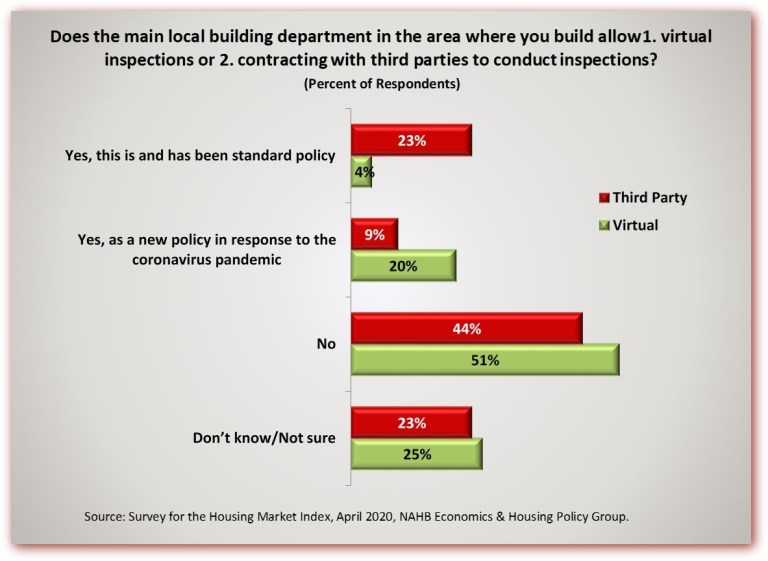In its early April survey of builders for its Housing Market Index the National Association of Home Builders (NAHB) added questions about the impact of the pandemic on construction. While many states have limited "non-essential" business activity, the Department of Homeland Security's guidance has given state and local governments the option of classifying residential construction as essential and many have done so.
NAHB asked builders whether construction was allowed in the areas where they build and 78 percent responded in the affirmative. But, even where construction is permissible, effects of COVID-19 may inhibit it or at least slow it down and as NAHB pointed out earlier, at least half of homebuilders have put projects on hold.
One potential problem is the need for construction inspections. NAHB has determined that construction of a single family home requires a median of eight different inspections and some require 15 or more. Many local governments have closed offices or required employees to work from home and some inspectors may be reluctnt to do site visits. Eighty-two percent of builders told NAHB that the pandemic has had a noticeable, adverse effect on how long it takes the local building department to respond to their inspection requests.
There are two ways in which local building departments may try to alleviate the problems. They can contract with third parties to conduct the inspections or allow virtual ones. Contracting is not unusual, 23 percent of respondents said those were standard operating procedure before the crisis. Only another 4 percent indicated that this has been a recent occurrence in response to the pandemic. However, one-fifth of builders say their local building departments have started to allow virtual inspections in response to the current emergency.

Paul Emrath, writing in NAHB's Eye on Housing blog, says "Keeping residential construction going during the virus-induced shutdown has a number of benefits to the U.S. economy, including generating enough work to keep 2.9 employees working







